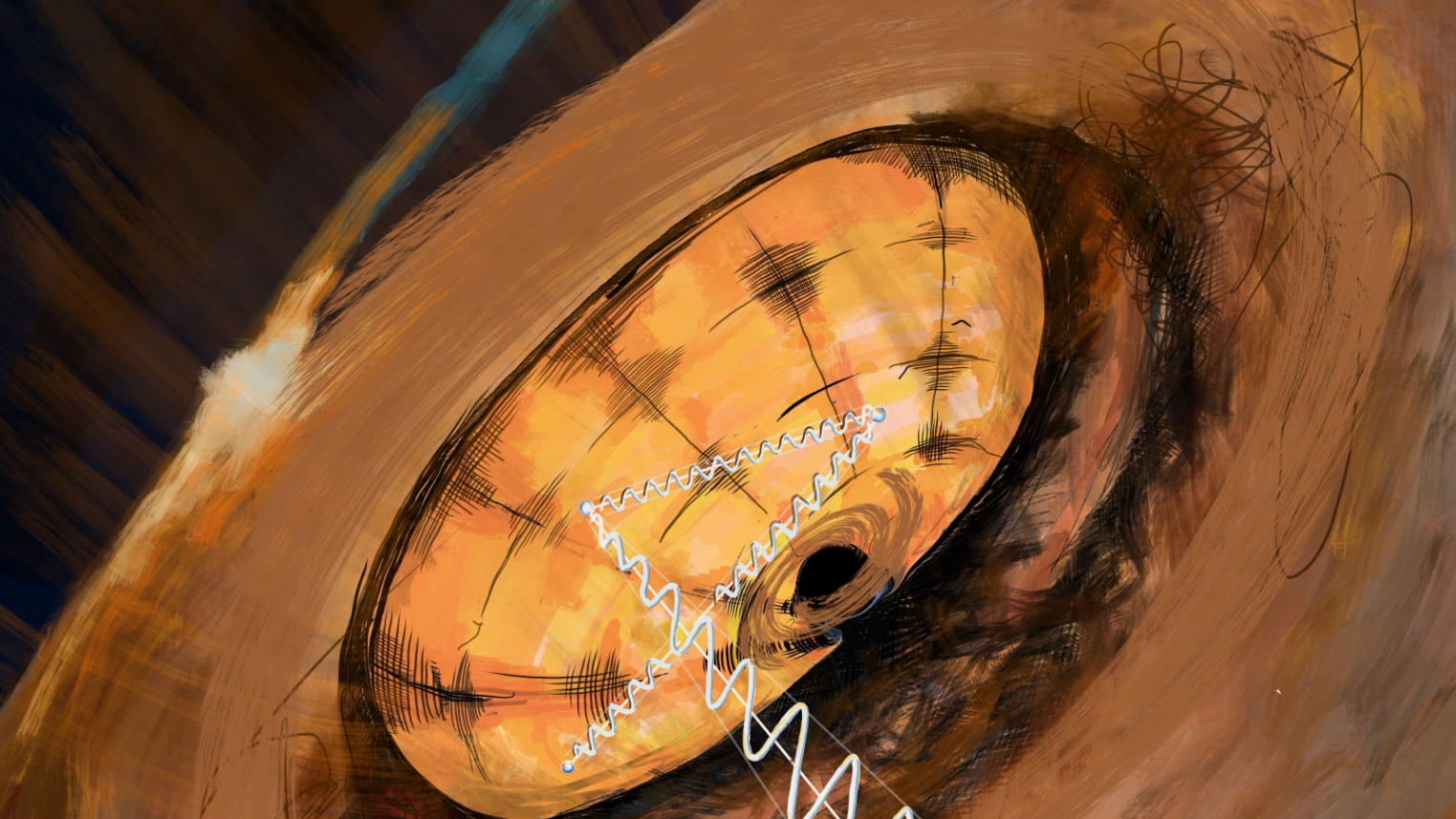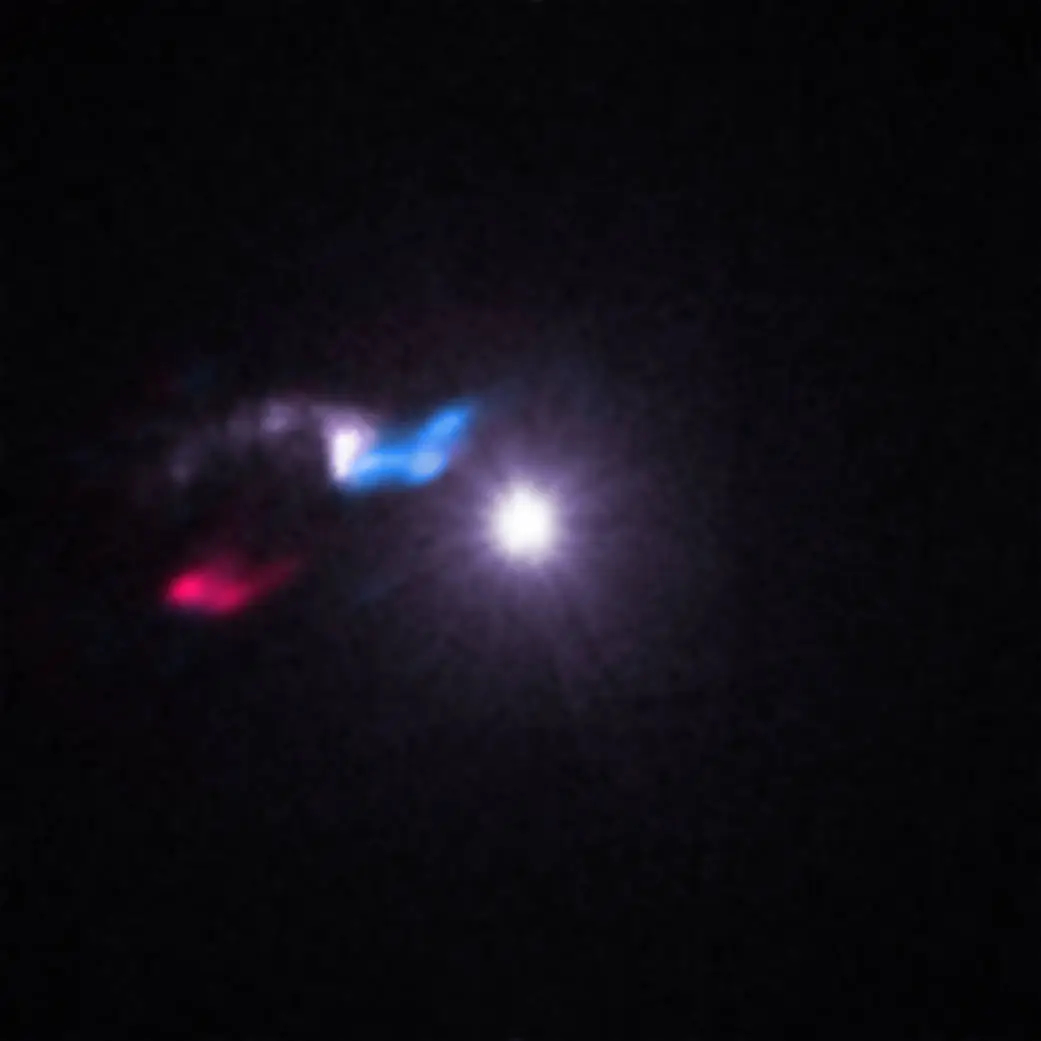Why is mystery object Cygnus X-3 so bright? Astronomers may now have the answer
This X-ray binary system is like a scale model of some of the most luminous quasars in the universe.

A binary system containing a massive star and what is probably a black hole, and which together are a source of intense X-rays, has been shown to be a smaller-scale example of some of the most luminous quasars in the universe.
The new findings, from an international team that used NASA's Imaging X-ray Polarimetry Explorer spacecraft (IXPE), describe how an X-ray binary system located about 24,000 light-years away in our Milky Way galaxy is amplifying its X-ray emission in a funnel-shaped cavity that encircles the probable black hole.
The system, Cygnus X-3, was discovered in the early 1970s when radio telescopes spotted powerful jets radiating out from it at nearly the speed of light. The radio emission from these jets lasts for a few days, before switching off, only to turn back on again later.
The origin of the jets was, at the time, mysterious. The system was described as an "astronomical puzzle," not helped by the fact that we cannot even see Cygnus X-3 in visible light; it's blocked by thick dust in the plane of our galaxy. During the 1970s, radio astronomers at observatories all around the world coordinated by telephone to try to catch Cygnus X-3 in the act of switching on or off.
Related: New map of the universe unveils a stunning X-ray view of the cosmos
Over the years, further observations in radio, infrared and X-ray wavelengths allowed astronomers to figure out that Cygnus X-3 is an X-ray binary system involving the transferral of matter between a massive star and a compact object that orbit a common center of gravity. The compact object is either a neutron star or, more likely, a black hole with a mass about five times greater than the mass of our sun. The massive star is a Wolf-Rayet star — a rare phase that supergiant stars undergo, wherein they radiate powerful stellar winds that begin lifting large chunks of their outer envelope into space. It is the material blown on the wind from this Wolf-Rayet star that is feeding an accretion disk that spirals around the compact object.
However, Cygnus X-3's luminosity is scarcely believable. The flow of matter onto a compact object like a black hole is controlled by a property known as the Eddington Limit. If the rate of accretion is high enough, the accretion disk becomes a logjam — matter ends up backing up, the disk grows dense and so hot that the amount of radiation pouring out can stall the inflow of fresh material. In this way, black holes can regulate their own growth, and some of the material is spat back out in the radio-emitting jets.
Get the Space.com Newsletter
Breaking space news, the latest updates on rocket launches, skywatching events and more!
However, some of the most luminous quasars — galaxies with extremely active supermassive black holes at their hearts — seem to break the Eddington Limit, in that their luminosity is extremely high yet they still seem to be accreting matter. And Cygnus X-3 seems to fall into this category, albeit on a smaller scale.
Now, a team led by Alexandra Veledina of the University of Turku in Finland has used IXPE to measure the degree of polarization in the X-ray light coming from Cygnus X-3. They found that the amount of polarization is high enough that it can only be explained by the X-rays scattering off the interior of a funnel-shaped cavity at the heart of the accretion disk.
"We have discovered that the compact object is surrounded by an envelope of a dense, opaque matter," said Veledina in a statement. "The light that we observe is a reflection off the inner funnel walls formed by the surrounding gas, resembling a cup with a mirror interior."

An opaque envelope that is elevated by a funnel-shaped cavity is typical of quasars that are described as 'ULXs' — ultra-luminous X-ray sources. The scale of amplification as a result of the X-rays scattering off the interior of the funnel cavity is also analogous to ULXs.
"ULXs are typically observed as luminous spots in the images of distant galaxies, with their emissions amplified by the focusing effects of the compact object's surrounding funnel, acting akin to a megaphone," said study team member Juri Poutanen of the University of Turku. "However, due to the vast distances to these sources … they appear relatively faint to X-ray telescopes."
Learning about ULXs in quasars has therefore proven difficult, but astronomers can now use the much closer Cygnus X-3 as a model for understanding those distant ULXs better.
"Our discovery has now unveiled a bright counterpart of these distant ULXs residing within our own galaxy," said Poutanen.
Cygnus X-3's outbursts are intermittent thanks to the elliptical orbit of the Wolf-Rayet star around the compact object, meaning that at times it is closer and more material in the wind falls on the probable black hole. IXPE was able to see that when Cygnus X-3 is in its ULX phase — when the amount of infalling material is at its greatest — the degree of polarization reaches 24.9%, but when the system is less active, the polarization drops to 10.4%. This suggests that the structure of the funnel changes in response to greater or lesser amounts of accretion. If the accretion rate drops too low, the funnel can collapse completely, only to rebuild itself when accretion picks up again, Veledina's team predicts.
The team is now planning further observations to try to catch this collapse happening, which would be signaled by the polarization dropping to almost nil, indicating that X-ray emission is coming directly from the hot gas on the surface of the accretion disk and not indirectly via scattering inside the funnel.
The findings were published on June 21 in the journal Nature Astronomy.
Join our Space Forums to keep talking space on the latest missions, night sky and more! And if you have a news tip, correction or comment, let us know at: community@space.com.

Keith Cooper is a freelance science journalist and editor in the United Kingdom, and has a degree in physics and astrophysics from the University of Manchester. He's the author of "The Contact Paradox: Challenging Our Assumptions in the Search for Extraterrestrial Intelligence" (Bloomsbury Sigma, 2020) and has written articles on astronomy, space, physics and astrobiology for a multitude of magazines and websites.
NASA spacecraft spots monster black hole bursting with X-rays 'releasing a hundred times more energy than we have seen elsewhere'
Could we use black holes to power future human civilizations? 'There is no limitation to extracting the enormous energy from a rotating black hole'









